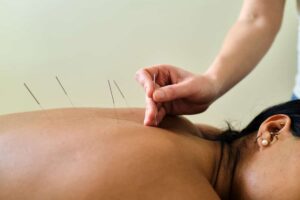Joint Health: Move it or Lose It
As a chiropractor, I commonly see people with complaints of neck and back pain. Usually I’ll take a set of x-rays to assess what their spine looks like, and sadly, I often have to tell them that they have some degree of spinal degeneration. Spinal degeneration presents as thinning of the cartilaginous disc between the vertebrae (called “degenerative disc disease”) as well as the formation of osteophytes, or bone spurs, along the edges of the bones. This process can occur at any joint but is particularly troublesome in the spine, due to all of the neurological structures it can interfere with. While we don’t want degeneration anywhere in our bodies, joints like hips, knees, and shoulders can be replaced, if necessary. However, we only get one spine and we haven’t figured out a good replacement for it yet, so we must take extra care of it throughout our lives.
The spine consists of 24 vertebral bones (plus the sacrum and coccyx) connected by 48 separate “facet” joints. These are the joints where Degenerative Joint Disease (DJD) is most commonly found. DJD is a gradual process that involves the wearing down of structures that make up a joint. This can happen anywhere in the skeletal system that has suffered a trauma or undergone too much “wear and tear.” This is why it is frequently found on one side of the body or at only 1 spinal level. For instance, if someone tends to put more weight on their right leg, the right hip and knee will likely degenerate faster. This is unlike an inflammatory joint disease, like Rheumatoid Arthritis (RA), that will occur on both sides of the body to multiple joints.
While conditions like RA tend to be genetically inherited, structural degeneration can happen to anyone, which is why it’s the leading cause of joint pain in adults. Since DJD tends to get worse as people age, it is generally thought that this is just a normal aging process. However, after learning about joint structure and function through school, research, and clinical experiences, I believe that aging is more correlated than causative, and that to an extent, degeneration is common but not normal.
When told “getting old” or “it’s due to aging” is to blame, people are lead to believe they have no control. After all, we can’t do anything about aging. As a practitioner who mainly works with joints, hearing that joints degenerate because of aging is like telling a dentist that people get cavities due to old age. Of course, there are some genetic conditions that cause people to have weaker joint structures. Certain things truly are out of our control, such as the fact that the more years we live, the more likely our joints will be subjected to stressors, traumatic forces and wear. Yet there are some things we can do to keep our joints healthier. My next blog post will address step 1 of 5 things you can do to defy aging and keep your joints young!






